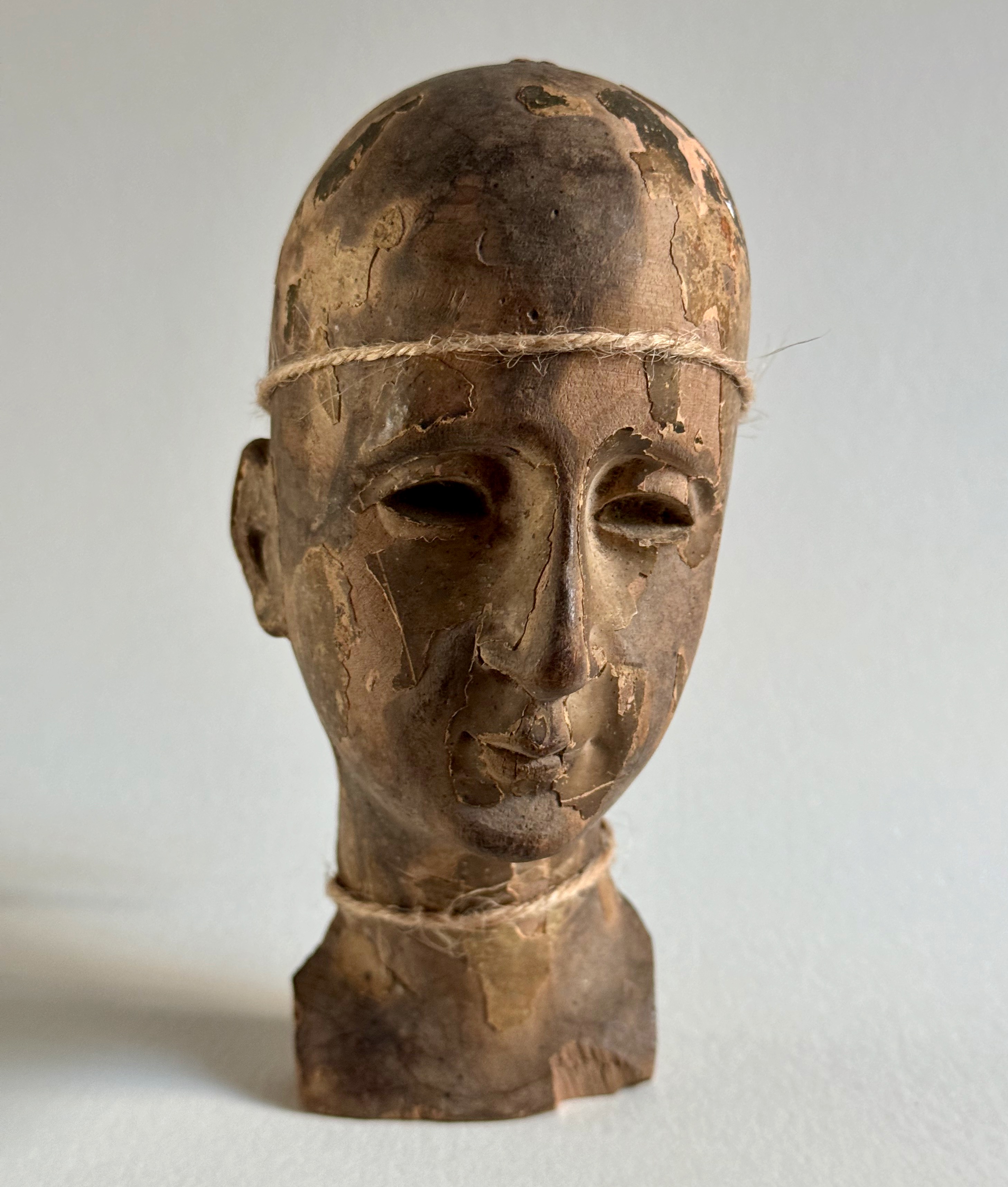

Title: 18th-Century Antique Hand-Carved Santos Religious Head
Shipping: $29.00
Artist: N/A
Period: 18th Century
History: Art
Origin: N/A
Condition: N/A
Item Date: N/A
Item ID: 628
This exquisitely crafted piece is truly spectacular. The warm patina that has developed over time is absolutely breathtaking when examined closely. Religious late 18th century heads of this kind are becoming increasingly difficult to find, typically residing in private collections. This is a rare opportunity to acquire such an extraordinary example of religious art. Size 5 1/2 inches tall. The width is approximately 3 1/8 inches and death 2 1/8 inches. Religious Santos are hand-carved wooden statues that originated in the Spanish colonies during the 16th to 19th centuries, primarily in Latin America and the Philippines. These devotional figures, often depicting saints, Christ, the Virgin Mary, or other religious icons, were crafted by skilled artisans, many of whom were influenced by European Baroque styles. Santos were integral to Catholic worship in these regions, serving as focal points for prayer and religious ceremonies. Over time, they became cherished family heirlooms, passed down through generations. Today, antique Santos are highly valued for their historical and cultural significance, as well as for their artistry, with many pieces now housed in museums or private collections. Busacca Gallery curates and showcases only the finest items on our platform. We are curators, collection consultants, and art advisors dedicated to discovering exceptional pieces that deserve to be showcased. The gallery provides stories, videos, and intriguing details about each historical collectible. If you have any questions, please do not hesitate to reach out—we're here to help.
Religious figures, often in the form of carved statues or icons, have played a significant role in worship and devotion within many religious traditions, particularly in Christianity. These figures, which can represent saints, Christ, the Virgin Mary, or other sacred beings, serve as tangible connections to the divine for believers. They are not worshiped themselves but are venerated as representations of holy figures who intercede on behalf of the faithful. In many cultures, these religious figures are placed in homes, churches, and shrines, where they become focal points for prayer, meditation, and rituals. The presence of these figures helps to create a sacred space, reminding worshipers of the spiritual beings they represent and fostering a sense of reverence and devotion. Over time, these objects often acquire deep personal and communal significance, becoming symbols of faith, heritage, and tradition.